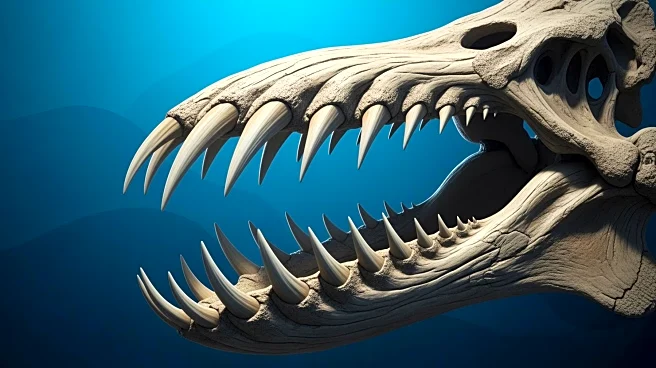What's Happening?
A Neanderthal skull, known as Altamura Man, has been discovered in a cave in southern Italy, sealed for over 130,000 years. This remarkably preserved fossil has provided new insights into the anatomical
features of Neanderthals, particularly their nasal structures. Researchers used fiber-optic imaging and 3D digital modeling to reconstruct the inner nasal cavity without removing the skull from the cave. The findings suggest that previously assumed cold-adaptive traits in the Neanderthal nose were not present, challenging the long-standing theory that Neanderthals evolved large, broad noses as a physiological response to frigid climates. The study indicates that the nasal cavity may reflect functional needs tied to body size and physiology rather than climatic adaptation.
Why It's Important?
This discovery is significant as it challenges the traditional understanding of Neanderthal adaptations to cold climates. The absence of specific nasal traits previously thought to be unique to Neanderthals suggests that evolutionary narratives may have overemphasized cold adaptation based on incomplete fossil evidence. The findings imply that Neanderthal nasal structures may have evolved to meet respiratory demands associated with their large, muscular builds rather than as a direct adaptation to cold environments. This research not only revises Neanderthal biology but also prompts a reevaluation of how adaptation is defined in evolutionary studies, potentially impacting future research in paleoanthropology.
What's Next?
The study sets a precedent for using non-invasive digital reconstruction techniques in paleoanthropology, allowing researchers to study sensitive fossils without risking damage. This approach could lead to further discoveries and revisions of long-held assumptions about human evolution. As virtual methods continue to advance, more fossils may be reexamined, potentially leading to new insights into the evolutionary history of humans and other species. Researchers may also explore the implications of these findings for understanding the physiological and metabolic demands of Neanderthals, contributing to a broader understanding of human adaptation.
Beyond the Headlines
The use of virtual paleoanthropology in this study highlights the ethical and practical benefits of non-invasive research methods. By preserving the fossil while extracting new evolutionary insights, researchers can avoid the ethical concerns and legal limitations associated with physical extraction. This approach may become a standard in the field, allowing for more comprehensive studies of rare and valuable fossils. Additionally, the findings challenge the notion that anatomical traits are always directly linked to environmental adaptations, suggesting that evolutionary models may need to consider a wider range of factors influencing species development.














